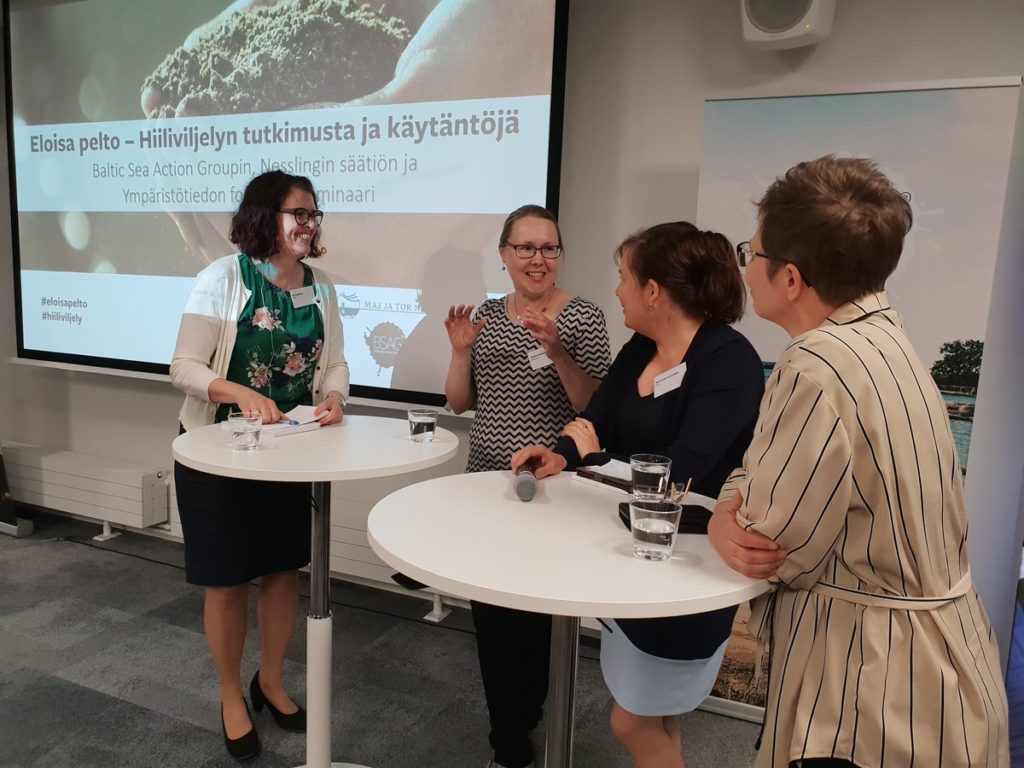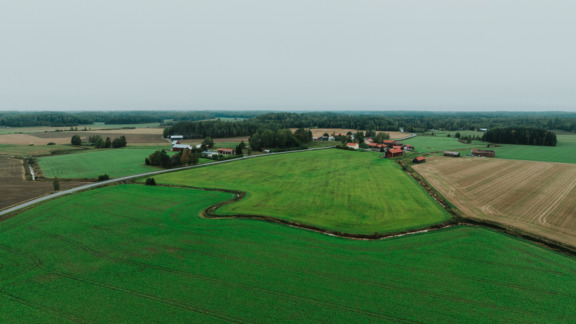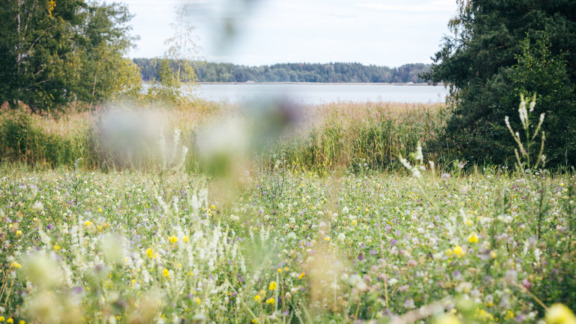A Living Field – seminar pointes the importance of the scientific research and practical action in carbon farming
Baltic Sea Action Group, the Nessling Foundation and the Forum for Environmental Information organized a highly popular Living Field seminar at SEB’s premises. Topics that attracted main interest at this science-oriented seminar were research and practices in carbon farming. These topics were strongly presented at the event, from breakfast to lunch, and not only by expert speakers. They were also featured in the impressive soil art and performance of the artist-researcher Teemu Lehmusruusu (Telling tree art + rsrch), as well as in the food offered. All the dishes included products and feedstock were from the carbon farms of the Carbon Action project. The carbon farms that provided the tasty food products were Vihreä Härkä, the Koski manor, the Tyynelä, Luolamaan Luomu, PieniKylä and the Knehtilä farms.
The science-orientation was strong as the actual potential of carbon sequestration, scientific verification of changes in carbon storage and need for scientific research on farming practices were discussed, in one way or another in all speeches and in public debates.
CURRENT ENVIRONMENTAL ISSUES ARE INTERRELATED AND FURTHERING CARBON FARMING REQUIRES MULTIDISCIPLINARY RESEARCH
Saara Kankaanrinta, Chair of the Board and founder of the BSAG, who opened the event, led the audience to consider the interrelation of environmental issues, such as climate change, reduction of carbon in farmlands, biodiversity and condition of the Baltic Sea. Speaking about the Carbon Action -project Kankaanrinta emphasized the importance of carbon sequestration to not only for mitigating the climate change, but also for the better agricultural productivity and profitability and as well as water management. Carbon Action’s close cooperation with farmers is an example of the project’s solution-orientation and co-design attitude, crucial asfarmers have a fundamental role in implementing solutions for complex environmental issues. Cooperation related to the carbon farming is also raised interest among companies and. And for example, collaboration between BSAG and Valio has started.

Researchers’ views were presented in their speeches by the Research Professor Jari Liski (Finnish Meteorological Institute), Professor Anna-Liisa Laine (University of Zurich, University of Helsinki), Docent Jussi Heinonsalo (University of Helsinki), Specialist Tuomas Mattila (Finnish Environment Institute) and Hanna Kekkonen, the Research Scientist (Natural Resources Center).
Jari Liski spoke about verification of carbon sequestration, its demands and methods under development. Reliable and acceptable verification methods are an important basis for the practical carbon farming. Anna-Liisa Laine’s video-presentation, in turn, focused on ecology and vitally important biodiversity and told about a new research with field tests on crop’s biodiversity, starting in the Carbon Action. After terrestrial biodiversity, attention was drawn to the vast variety of soil. Jussi Heinonsalo explained the microbial system of the field, the ecology of soil microbes and the importance of microbes for carbon sequestration, soil’s structure and carbon farming.
FROM RESEARH TO THE PRACTICE. A REMINDER ABOUT TURF FIELDS AS CARBON STORE AND EMISSION SOURCE
Tuomas Mattila continued with practical issues of the carbon farming. In his speech, he clarified the carbon cycle between crops and soil, the improvement of growth conditions and the basic principles of carbon farming. In carbon farming it is important to increase the photosynthesis of vegetation, to support and increase the activity of the micro-organisms in the soil, and to reduce the ground disturbance. All of these also help to improve the soil’s growth condition.
The following speech moved from adding carbon to agricultural lands to its storage. Hanna Kekkonen told about the carbon stocks at turf fields, their release and their impact on Finland’s greenhouse gas emissions. The presentation reminded that turf fields are only a small part of Finland’s arable area, but at the same time a very significant source of greenhouse gas emissions from agriculture. Thus, measures to store carbon in turf fields could bring to significant emission reductions.
INTERVIEWS FOCUSED ON MOTIVATION AND DECISION-MAKING. ALSO AT THE EU LEVEL
During the interview session, dedicated to motivating factors for farmers, Eija Hagelberg interviewed Sirkku Puumala a farmer, Valio’s representative Anu Kaukovirta-Norja and Maria Höyssä, Senior Research Fellow from the Turku University. The discussion highlighted among other things farmers’ productional starting points and Valio’s interest and need to develop sustainable practices.

In the decision-making interview session, questions were presented by Juuso Joona, a carbon farmer and a member of the Carbon Action steering group, and in the panel answering were Professor Markku Ollikainen from the University of Helsinki, Kyösti Arovuori, Research Director of Pellervo’s Economic Research, and Marja-Liisa Tapio-Biström, Senior Advisor at the Ministry of Agriculture and Forestry. The debate on decision-making raised the need for reliable verification of carbon sequestration and its necessity for furthering carbon farming through political means. Also, challenges of modern agriculture at the system level and complexity of the systemic change were debated on .
In her conclusion, Heidi Hautala, MEP, part of the European Green Party, united the carbon sequestration and agricultural environmental issues with the EU policy. Hautala emphasized the urgency of changes and measures, as well as the opportunities for cooperation between the countries of the Baltic Sea area. She emphasized the importance of mutual understanding of the soil health and fertility bringing these issues also into the discussions at the decision-making level.



